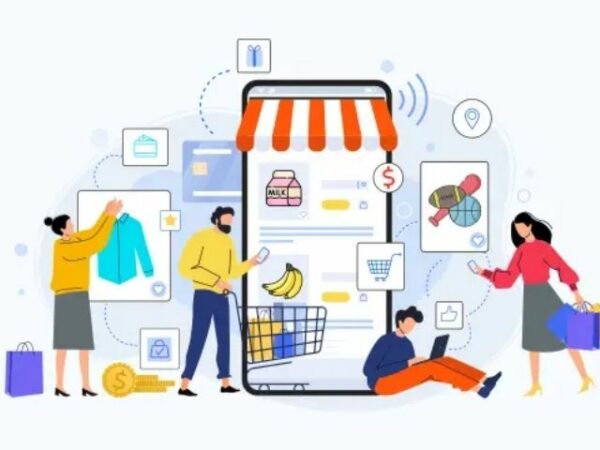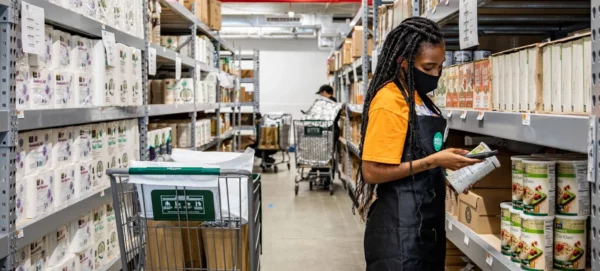The Complete Guide to Quick Commerce

The Complete Guide to Quick Commerce
Quick commerce has taken all over the market. The e-commerce environment has fast changed to meet the changing needs of customers. Speed is crucial to the current consumer journey. Potential stakeholders are worried about how to react to changes in supply and demand as a part of the eCommerce ecosystem. Ad-hoc and last-minute orders must also be fulfilled as efficiently as possible.
Customers valued speed and convenience after the outbreak. Quick commerce enters the scene to support the clients’ current mentality.
What is Quick Commerce?
It is categorised as a distinct business model with a very small order placement and delivery window and is frequently referred to as the next generation of e-commerce. The delivery schedule has changed from a 1-day delivery window to a 10–30–minute time period as generation Z has taken control of the digital environment.
Quick Commerce is a quick order fulfilment process to handle orders for micro to small amounts of food, including items like groceries, stationery, prescription drugs, and more.
Many organisations have fully embraced the concept to attain the great product-fit concept to the current internet markets. As a result, while developing the value proposition of any organisation, the shift from the good old model to the rapid commerce model has a significant impact.

Quick Commerce business model: A brief Overview
The supply chain logistics experienced a significant interruption as a result of the pandemic’s entry into our world. The name “Quick commerce” has given the eCommerce industry a new variation. For those who are unfamiliar, it is a distinct business model of lightning-quick delivery that handles logistics functions and delivers groceries to customers’ doorsteps within 10 to 30 minutes of ordering.
The main emphasis is on providing services for micro, and smaller amounts of light-weighted goods, ranging from regular shopping needs to pharmacy needs. The change from fully stocked huge warehouses to nearby micro-warehouses has been made as a result of consumers focusing more on their online purchasing behaviourism.
Salient features of Quick Commerce
Here are the qualities of rapid commerce that have been highlighted that make it distinct, preferred, and a trendsetter in the market.
1. A predefined competitive USP
Quick commerce undoubtedly expands the potential of your company’s current USPs. Quick commerce is renowned for adding a new value proposition to the business model and aiding in the addition of ease and speed as a part of their logistical journey, according to the concept of bridging competitive advantage in the market.
The Quick Commerce procedures are made to be competitive with both brick and mortar establishments and any e-commerce marketplace.
2. The burning margin
Quick commerce is claimed to create new options for a potential profit with each sale and enhance the value proposition. You can probably have a competitive advantage over others if you can figure out how to stay ahead in Quick commerce. The income data for rapid commerce increased by 50% more value during the epidemic than the prior figures.
Those that figured out the code were able to make a sizable profit by charging more for on-demand fulfilment within a specific time window. Divergence in product lines, attracting affluent audiences, and many more benefits are among the additional Q-commerce benefits.
3. Offering the delightful customer experience
It is crucial for your company to monitor client expectations and experiences when you work in a customer-centric sector. It’s crucial to put yourself in your clients’ position when working in the rapid commerce area. Delivering on consumer expectations will help you gain their loyalty.
The introduction of fast commerce allowed for the clear catered-to and addressed fulfilling the customers’ dynamic wants.
You can retain clients and expand the consumer base for your company by having delighted and delighted customers.

Steps to implement Q-commerce
Quick commerce is an essential step in your delivery firm if you want to retain clients and increase your profit margin in today’s fiercely competitive industry.
Here is a quick read to help you understand how to deal with a larger audience while preserving the idea of rapid delivery and enjoying greater profitability and profitability margin.
• Setting up the local hubs
To begin with, there should be a nearby hub or warehouse where the products can be picked up, packaged, and delivered more quickly and affordably. You may develop a speedy commerce process when you have a local warehouse close to your customers. It will increase operational effectiveness, decrease unnecessary mileage and fuel costs, and shorten turnaround times.
You can select to request that your delivery partners offer extremely quick delivery, regardless of the state of the roads or the amount of traffic. Another pre-establishment activity that can aid in motivating the business process is the combination or collaboration with the 3PL at a very affordable rate.
• Keeping up with the stock
When deciding to go into Q-shoes, commerce’s another consideration is carefully selecting the merchandise and its SKU. Conduct thorough market research to gain a clear understanding of market demand, including changes in flexible demand. You have the option to select on a stock list and the overall number of the goods.
How can it help?
By picking up the merchandise from the adjacent warehouse and accelerating the delivery window, there will be an added benefit for promptly responding to on-demand fluctuations and escalating the delivery process. As a result, you may quickly implement the fast commerce model for your current firm.
Top players in the Q-commerce vertical
Many new actors emerged during the epidemic and after the lockdown, transitioning their enterprises into Q commerce business models. Here are some names worth mentioning:
- Zepto
- Swiggy’s Instamart
- Dunzo Daily
- Blinkit
Committed to matching the 15- minutes delivery window, these players are ruling the market.

Perks of choosing a Quick commerce business model
1. Speed: The rapid commerce business model delivers swiftness in the delivery procedure when compared to the traditional retail shop. Customers might receive the requested delivery at their doorstep in about 15 to 30 minutes.
2. Round-the-clock services: Q-commerce is required to provide round-the-clock services with a full 24-hour operation to satisfy the consumers’ changing needs.
3. Convenience: As a result, amid all the advantages, we cannot overlook how comfortable and convenient rapid commerce services are for clients.
Why is Q Commerce on the rise?
The traditional ways of buying groceries have been replaced by a brand-new concept called Q commerce. Consumer purchasing patterns have been influenced by convenience, urbanisation, and hectic lifestyles. Home delivery has also been more popular among customers since the pandemic’s start due to social withdrawal and work-from-home norms. This change in consumer behaviour has encouraged e-commerce enterprises to develop business models that focus on speedy delivery.

What are dark stores?
Choosing and packing the components in accordance with the order, storing the goods in the appropriate location, replenishing the stock, and final dispatch are high-level tasks in a typical warehouse system. In order to give delivery personnel ample time to reach the consumer, order arrival to dispatch times in dark stores should ideally not exceed five minutes (for a 15-minute guarantee time). Therefore, creating a lean system to minimise time losses in all process phases due to unnecessary operator movement or item searching becomes crucial for an efficient, quick delivery dark store or micro fulfilment centre.
How dark stores are changing the delivery systems?
The development of intriguing new urban fulfilment alternatives, like the dark stores and more effective use of space, are both made possible by technological advancements. Internet retail sales are predicted to grow by 37 billion pounds by 2025, from 27 per cent to 30 per cent, according to Future Gazing research.
Additionally, a micro fulfilment centre needs workers to choose and pack the products and prompt delivery services to get the products to customers’ doorsteps.
Conclusion
Q-commerce is a recently coined concept that has created numerous opportunities in the commercial sector. Choosing a Q commerce model is the best option because it considers and matches the current thinking.
Edited by Prakriti Arora




